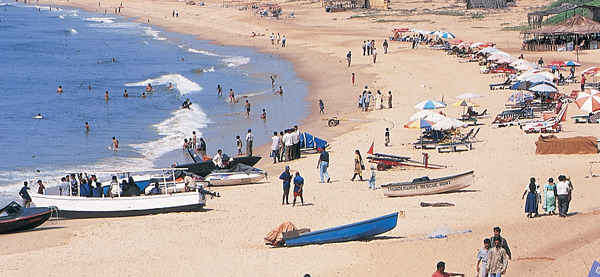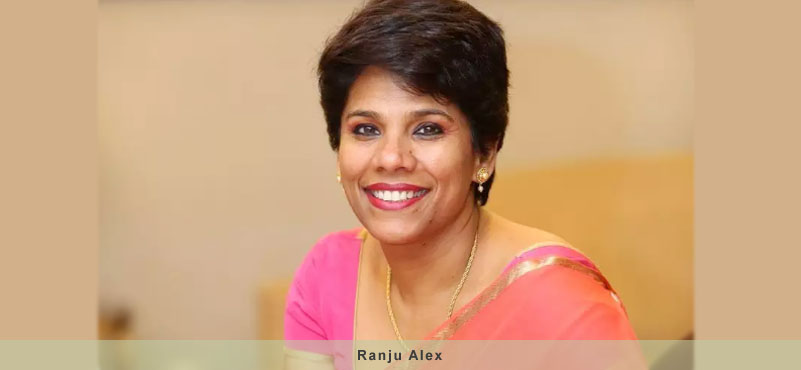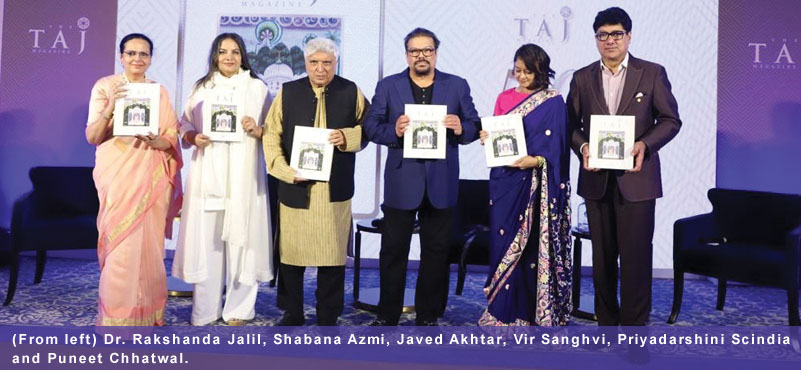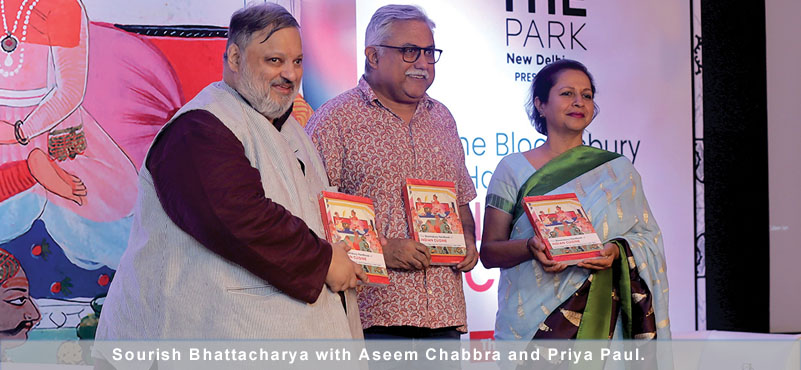The recently released HVS Report takes a holistic look at India’s most important cities and how they fared in the recent past. It also gives a detailed insight into the future trends and performance expectations. While strong supply of hotel rooms in the capital will strengthen the upscale and the mid-market segment, the supply is anticipated to be absorbed. We bring you excerpts of the exhaustive report.
Key Trends
This Section highlights countrywide trends and statistics using data from the past five years’ surveys. Subsequently, the city scenarios are highlighted for the seven major cities and 13 other cities across the country.
Indian Hotel Industry Performance – Country Trends
- Growth in Operating Performance Indicators: The average rate registered in 2015-16 was `5,128, the highest recorded since 2009-10. Similarly, the occupancy continued to witness a rise, recorded at 62.1% in the previous fiscal year (Exhibit 1).
- Contribution to Total Revenue: The last few years had witnessed a steady decline in the contribution of the Rooms division to the topline. However, 2015-16 did not follow this trend, with the Rooms Revenue showing an increased contribution of 51.7% to the total revenue. On the other hand, contribution from Food & Beverage and Banquets declined to 41.5% from 42.6% recorded in 2014-15. The contribution of the Other operating departments has remained range-bound for the past five years. Exhibit 2 displays the contribution to Total Revenue by the different operating departments. Exhibit 2: Sources of Revenue (2011-12 to 2015-16)
- Decrease in Departmental Expenses: Departmental Expenses as a percentage of Total Revenue decreased for the third year in a row, mainly driven by the percentage decrease in Rooms and Other Expenses. However, F&B Expenses increased to an All-India average of 64.1%, a sharp increase from the previous year. Exhibit 3: Departmental Expenses (2011-12 to 2015-16)
- Cost Analysis: Except for F&B Expenses, the survey results depict that the expenses, as a percentage of Total Revenue, remained stable or declined in 2015-16. However, on a per available room (PAR) basis Marketing Costs, Rental & Other Incomes, and Management Fees increased by 23%, 18%, and 14% respectively over those recorded in 2014-15. Fixed expenses, conversely, portray a 18% decline on PAR basis over that in the previous fiscal.
- Food & Beverage: As highlighted in Exhibit 2, F&B and Banquets Revenue as a percentage of Total Revenue declined in 2015-16. This corresponded to an increase in F&B Expenses as a percentage of Total Revenue over that registered in 2014-15. On closer inspection, revenue from the food and beverage outlets display a decrease on a PAR basis, whereas revenue from Banquets has increased. The F&B Expenses on a per available room basis have increased by 9%.
- Guest Analysis: Domestic travellers continue to be the majority generators of room night demand in India. It is important to highlight that the Domestic Business Traveller segment has displayed a year-on- year growth to form 34.4% of the total demand accommodated by Indian hotels, whereas the contribution of Domestic Tourists or Leisure Travellers has declined from 21.7% in 2014-15 to 19.8% in 2015-16. Foreign Demand, on the other hand, has remained stable, contributing 20.6% between the Business, Leisure and Tour Groups segments (Table 1-5).
- Online Reservations as a Source of Advance Bookings: Another integral trend highlighted by the survey results is the increasing contribution of Online Reservations Systems as a source of advance bookings for hotels in India. In 2015-16, 12.4% of the total advance reservations were made via these channels, compared to 8.5% during 2014-15. This trend is expected to gain traction, as more travellers adopt the ease and convenience offered by Online Reservations.
- Net Income: As depicted in Exhibit 4, All India average Net Income as a percentage of Total Revenue crossed the 30% mark in 2015-16. Primarily driven by the increase in average rates and, therefore, increase in Rooms Revenue for hotels across all star categories (barring one), the increase in Net Income arrests the downward trend witnessed over the past three years. Exhibit 4: Revenue and Net Income (2011-12 to 2015-16)
Seven Major Cities
Bengaluru
Bengaluru has established itself as a thriving service industry led economy, driven primarily by the IT/ITeS sector. Equipped with one of the highest densities of Grade A office space, the city is also home to a healthy mix of research, manufacturing, aeronautical engineering and biotechnology companies, as well as the largest number of start-ups in India. These industries remain the major demand generators for the third largest Indian branded hotel market.
Bengaluru hotels witnessed a surge of 15.3% in marketwide RevPAR in 2015/16, surpassing the other major hotel markets in the country. Driven mainly by robust growth in occupancies, the city’s hotels also displayed a marginal increase in average rates, ending a four-year downward trend. The fact that the resilient market performance was accompanied by a 6% growth in supply bodes well for the city that is expected to add approximately 3,500 rooms in a phased manner over the next five years.
The city, however, continues to face challenges, mainly due to the paralysing infrastructure and lack of a convention centre built to international standards, in the face of the burgeoning demand from the Commercial and MICE segments. However, HVS remains extremely optimistic about the hotel market’s performance, with a steady increase in RevPAR anticipated for the next three to five years.
Chennai
Chennai, one of the largest hotel markets in South India, enjoys demand from all the major business sectors including manufacturing, IT/ITeS, port and port-related activities, the government and embassies, the banking and financial sector and a growing MICE demand base owing to the recent expansion of room inventory and large-scale meeting facilities in the city.
In 2015, the market continued on its path to recovery even in the face of floods that impacted business towards the end of 2015. The city also witnessed the opening of new hotels, including the InterContinental Resort on ECR, Fortune Select Grand on GST Road, and Turyaa by Heritance on OMR in the last calendar year. All the micro-markets in Chennai recorded a growth in occupancy in 2015-16, while average rates declined marginally.
Going forth, with over 1,000 rooms expected to enter the OMR market over the next two years, we expect the hotel market on OMR to remain under pressure in the short term. Overall, with the Meeting and Conference and Commercial demand growing in the city, we expect hotels (especially in Guindy) to consolidate and build on their average room rates having achieved a healthy occupancy.
Goa
Goa continued to demonstrate growth, marking an eventful year with two high profile events – the Defence Exposition and the BRICS Summit in 2016. The Domestic FIT and Meeting and Conference segments showed growth post the decline in charter movements, highlighting a notable change in the nature of demand.
A significant development has been the signing of an agreement between the Government of Goa and the GMR Group to develop and operate the long-awaited greenfield airport project at Mopa in North Goa. The first phase is reported to start operations by 2019-20 and is expected to enhance domestic and regional connectivity, thereby giving a boost to the tourism and hospitality sector. Further, the government is also developing an electronic city in Tuem that is expected to generate commercial demand for North Goa hotels.
With the growing demand, changing segmentation and infrastructure developments, the government as well as private investors are keenly evaluating proposals for large-scale meeting facilities in the city. While
Goa continues to face competition from beach destinations in South and Southeast Asia, we believe that the buoyant domestic demand and the anticipated development in regional connectivity will continue to drive the market’s growth in the medium to long term.
Kolkata
Kolkata is driven primarily by commercial activity emanating from PSUs, PSBs, manufacturing, IT/ITeS, engineering, medical activity and the telecom industry. Over the course of the last decade, the city has witnessed expansion further east with residential and commercial developments along Rajarhat, EM Bypass and Salt Lake City. Similarly, hotels in Kolkata are on the cusp of change. For the first time in the city, hotels are now divided into two distinct micro-markets – the city hotels (which serve demand emanating from the CBD and south-western industrial corridor) and hotels along the eastern periphery (serving demand originating from Rajarhat, Salt Lake and the EM Bypass).
In 2015-16, while room night demand had not witnessed noteworthy change, demand from the Commercial and Extended-Stay segments witnessed organic growth, proportionate to that of commercial/industrial activity in Kolkata. Leisure demand has witnessed marginal improvement in this market, because of initiatives such as the recent introduction of river cruises, which attract foreign tourists to the city. The only segment to exhibit healthy growth is the Meeting and Group segment primarily due to social events, weddings and a few city-wide conferences.
HVS is tracking approximately 3,000 rooms expected to enter the market over the next five years and likely to play a role in shaping the nature of the Kolkata hotel market in future. Due to the micro-market distinction, the impact on existing hotels may be cushioned to some extent; however, it is likely that the city hotels will experience supply pressure.
Mumbai
Mumbai’s hotel market achieved the highest occupancy recorded over the past four years amongst all major markets across the country. This continued upward trend in occupancy over the past six years is testament to the inherent strength and robust nature of the market. Additionally, Mumbai also recorded the highest average rate, further consolidating its position as the best performing hotel market in terms of RevPAR too. A closer look at Mumbai’s three micro-markets, namely South, Central and North Mumbai, which have minimal overlap in room night demand, reveals an increase in occupancy and average rates2 in each. Many factors – strong growth in corporate travel, an upswing in MICE demand and the promising growth in the Extended-Stay segment – have favourably impacted Mumbai’s hotel market.
In the short term, the bulk of the supply is expected to be within the upscale and luxury positioning and that should further assist in raising the overall average rates. In the medium to long term, we expect the Mumbai International Airport Limited (MIAL) landside development that includes several new hotels, commercial and retail complexes and hospitals to change the face of Mumbai at large. However, in the short to medium term, we anticipate certain improvements in infrastructure – the Coastal Road, extension of the Metro and
Monorail and the proposed convention centre in BKC that is expected to augment MICE demand – to assist in hotel performances. Going forward, HVS forecasts steady growth in the city’s performance in the coming years.
New Delhi
New Delhi is home to the largest branded hotel market in the country. Its hotels recorded a year-on-year growth in RevPAR, despite supply pressure, in 2015-16. When considering the self-contained micro-markets in the city, the Aerocity hospitality district saw an increase in occupied room nights driven by growth in Corporate, Transient and MICE demand. The demand previously catered to by the unorganised sector in the area has been absorbed by the branded mid market and budget hotels located within the district. On the other hand, Central, South and East Delhi hotels dipped their average rates in the effort to capture some of
the demand lost to the Aerocity hotels. This resulted in a drop of 4.6% in marketwide average rate which was, however, compensated by a robust 8.2% growth in occupancy over that recorded in the previous year.3
HVS anticipates India’s capital to add approximately 2,800 rooms over the next five years, with the major part of the supply in the upscale and mid market positioning. However, demand for room nights does not show signs of slowing down, and given that the existing hotels move towards a rate driven strategy, the market is anticipated to absorb the new supply successfully over the medium term. Therefore, the outlook for the New Delhi market remains positive.
Pune
The Pune hotel market has weathered a rough storm since 2007-08. During this period, a staggering increase in room supply resulting in a downward spiral in both occupancy and average rate performance somewhat overshadowed the year-on-year double-digit growth in demand, and led many to question the strength of the market. The silver lining is that the slowdown in new supply coupled with the robust and continuous increase in demand has helped the city’s hotels perform well in occupancy. Room rates have witnessed a marginal improvement, particularly in 2015-16 and 2016-17.
In addition to serving as a manufacturing hub in Western India, the city has developed into an important IT/ITeS centre. Availability of large commercial floor plates along with a young and educated workforce have fuelled the rapid development of the city. Proximity and ease of connectivity to Mumbai, the country’s financial capital, has also helped.
Going forth, the pace of new supply is expected to remain sluggish while demand is anticipated to witness steady growth. Moreover, airport infrastructure, which is inadequate in view of the city’s swift growth, is planned to be improved, keeping in mind the recently-announced development of a greenfield airport at Purandar. All in all, the outlook for the city remains positive.
Indian Hotel Industry – Seven Major Cities
Introduction
In this section, we present the operating profiles and financial data for different categories of hotels in seven major cities: Bengaluru, Chennai, New Delhi, Goa, Kolkata, Mumbai, and Pune. This section will provide the reader an understanding of key trends in hotel performance in these cities.
Trends
* Guest Analysis: Domestic guests represent the majority of guests accommodated by hotels across the seven cities. However, when compared to the percentage reported in last year’s survey, Five-Star Deluxe, Five-Star and Four-Star hotels in Mumbai and Kolkata have displayed a decline in the Domestic demand and a corresponding increase of Foreign guests. Furthermore, the Five-Star Deluxe and Five- Star hotels located in Bengaluru, Chennai, Kolkata, New Delhi and Pune have recorded a marginal decrease in the percentage of Business guests accommodated by the hotels, over that in 2014-15. Three- Star hotels in Chennai, and Four-Star and Three-Star hotels in Mumbai continue to account for the highest percentage of repeat customers when compared to the hotels in other categories and cities.
* Average number of Trained Employees: Hotels across all star categories in Bengaluru and Mumbai report increase in the average trained employees across managerial and staff levels. However, a concerning trend displayed by hotels in Chennai and Kolkata is the increasing number of untrained employees, with the Four-Star and Three-Star hotels in Kolkata reporting an average of almost 40% of untrained employees at their hotels.
* Occupancy and Average Rate: This year’s survey results indicate that Five-Star Deluxe, Five-Star and Four-Star hotels in Pune report the highest increase of 21% in occupancies, whereas Four-Star and Three-Star hotels in Kolkata report the highest increase in average rates. However, as the aforementioned star categories in Kolkata did not witness an increase in occupancy over the last year, the Pune hotels lead in terms of the highest RevPAR growth of 39%. Chennai’s Three-Star hotels have reported a decline in occupancy as well as average rates, resulting in a RevPAR decline by 25%.




































